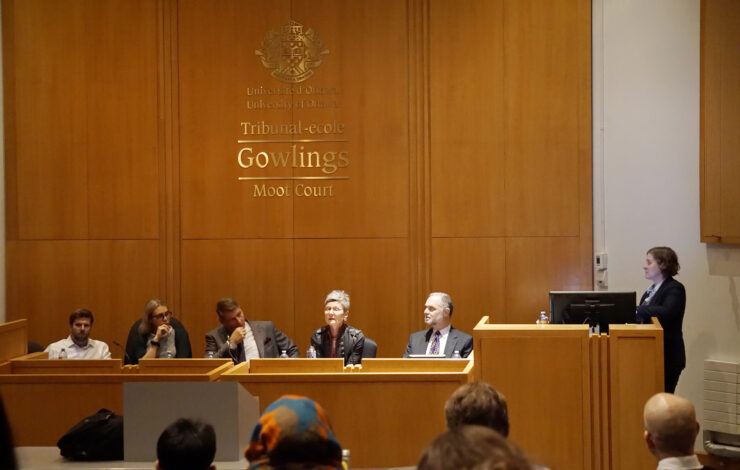Government launches cyber safety campaign
ON OCT. 3, Vic Toews, the Minister of Public Safety, unveiled Canada’s new cyber security campaign at the University of Ottawa to signal the start of Cyber Security Awareness Month. An increase in technology use has made Canadians more vulnerable to cyber attacks—an issue the Government of Canada’s Public Safety Canada is concerned with.
“Digital infrastructure increasingly underpins all aspects of our lives,” said Robert Dick, director general of national cyber security at Public Safety Canada. “The things that we do every day, from the exchange of information through email, texting, or online connectivity to the systems that operate Canada’s basic infrastructure, the traffic lights, the electrical grids, the banking system, your debit [and] credit—all of those things depend on a digital infrastructure.”
At the debut of the Getcybersafe.ca campaign, Toews stated cyber safety is a joint effort between the citizens and the government, the government being responsible for providing citizens with a resource to get informed about the risks that exist online. The website focuses on educating citizens about common threats, scams, fraud, and how to protect things like your identity, money, and family.
“Canadians [are] aware of the new reality and this new space in which they are living, working, and playing, [but also] of the need to take steps to protect themselves online,” said Dick.
“[Getcybersafe.ca exists] so that they are better aware of the risks that are out there and can turn to a trusted source for information on steps they can take to protect themselves.”
The campaign has been implemented as part of a larger framework that the Government of Canada is enacting to protect Canadians from online attacks and threats.
“It’s part of the Government of Canada’s cyber security strategy, which was announced a year ago, and that strategy has three pillars,” Dick explained. “Two of those pillars pertain to protecting systems. The first [is] the government’s systems and [second,] systems of importance to Canadians that fall outside the federal government’s ownership. The third pillar is really about making Canadians aware.”
Universities are also ensuring cyber security is a priority. Because a lot of the tools students use to interact with their institution are online, the U of O has taken steps to protect university members from online threats and providing assistance to victims.
“We try to inform the students, staff members, and teachers by putting as much information as we can on [our] website,” said Gerald Chervet, a computer analyst at Computing and Communications Services at the U of O. “We also offer tools like anti-spam and anti-virus [software]”
Both Dick and Chervet offered similar advice on cyber security. Their main message was to keep security features up-to-date.
“A lot of people know intellectually that they need to be changing their passwords, changing the default password on the firewall, having a firewall, having anti-virus software. Often, it’s easy to forget and click that button that says ‘go away’,” said Dick.
“I guess that our message is, just as easy as it is to click ‘ignore,’ it’s [also] easy to click ‘update’ and make sure you are protected.”
For more information on how to protect yourself online, check out Getcybersafe.ca. Cases of cyber crime can be reported to your local police service. In cases of fraud, you can contact the Canadian Anti-Fraud Centre at Antifraudcentre.ca.
—Chris Radojewski



